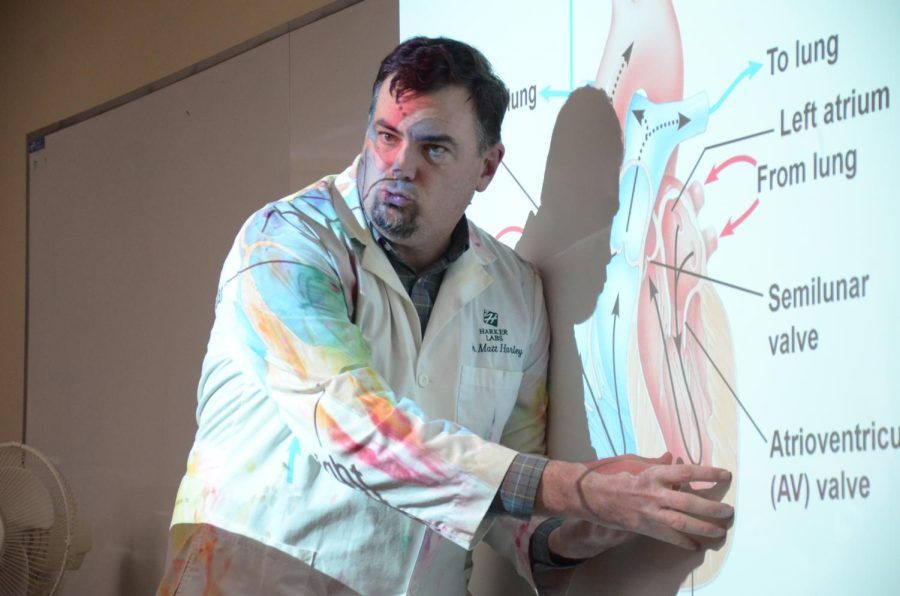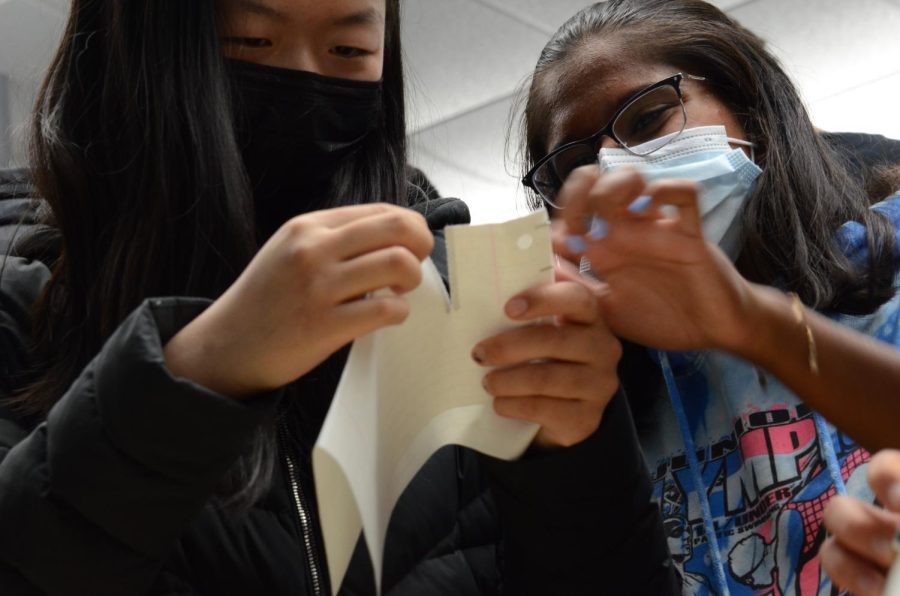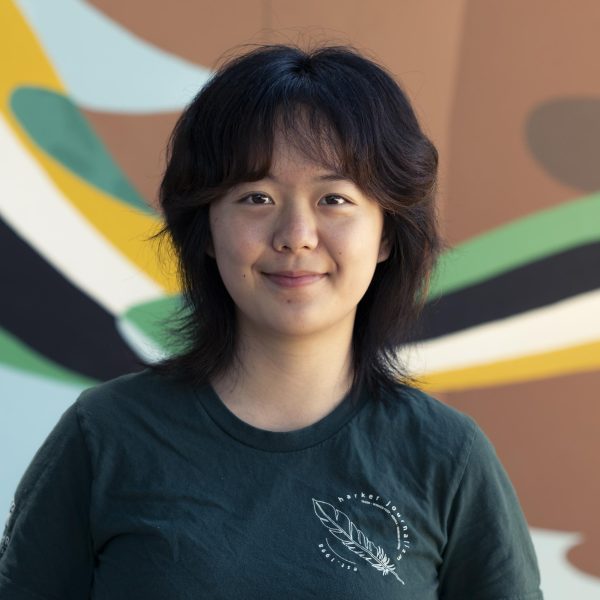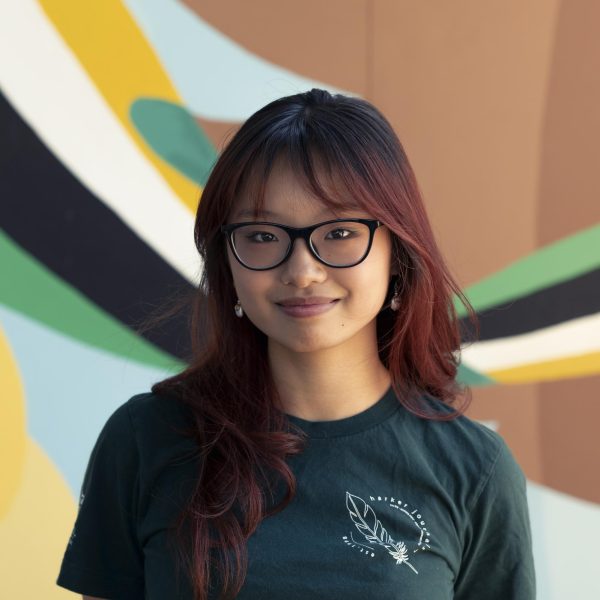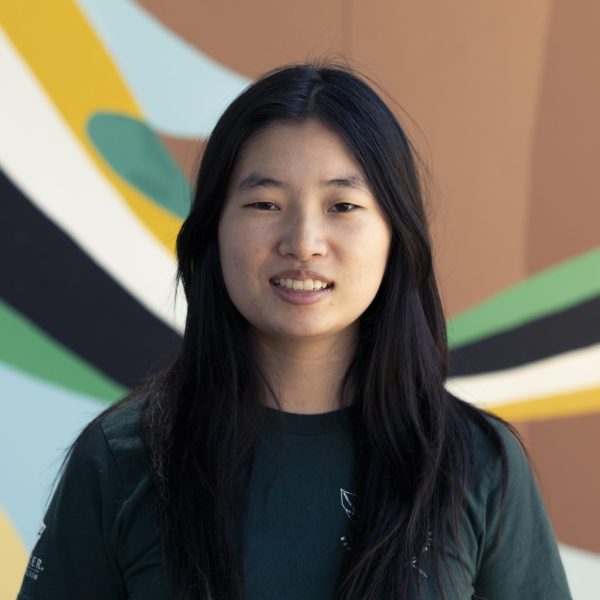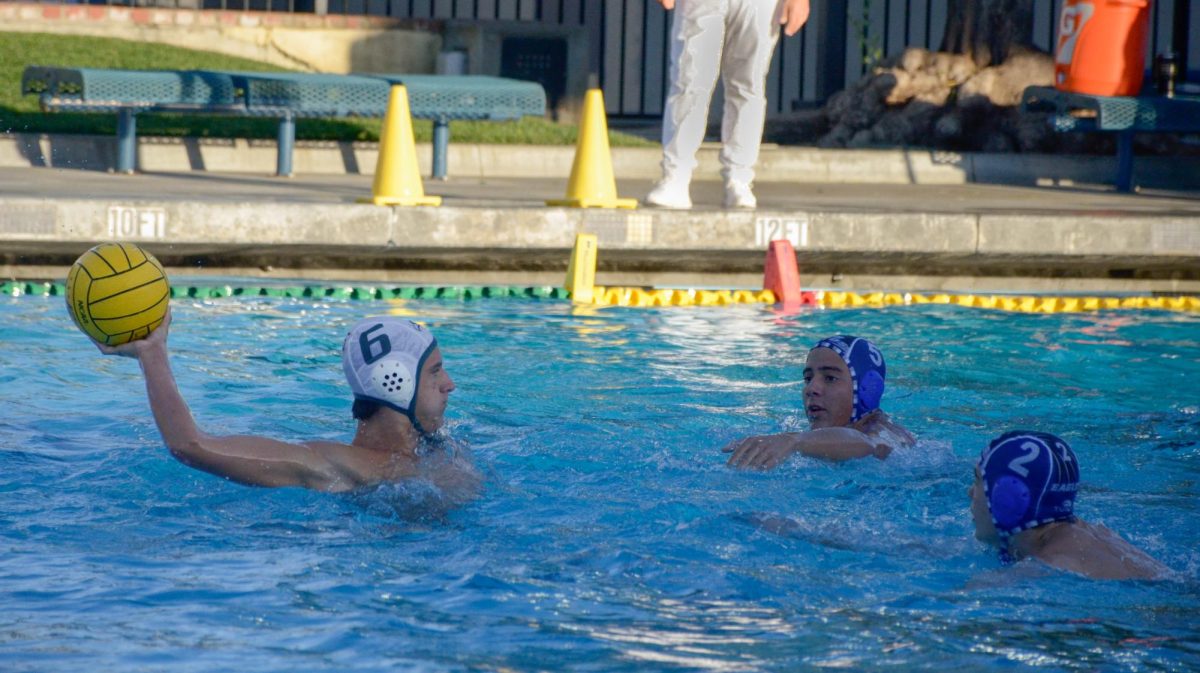Evening of Medicine invites students to explore medical profession
Upper School biology teacher Matthew Harley gestures at his presentation on the anatomy of a heart. At the Evening of Medicine, he procured hearts of various sizes for the attendees to hold and examine.
November 11, 2022
Around 50 students attended the Evening of Medicine, hosted by Medical Club in Nichols on Nov. 4 from 6:30 to 9 p.m, where two speakers presented about their research and students participated in hands-on activities, of which included a pig heart dissection and a surgery workshop.
The event included two guest speakers and three interactive workshops, providing students with the opportunity to learn more about various aspects of medical fields such as neurosurgery, anatomy, laparoscopy and bariatric surgery. Medical Club Co-President Johnathan Mo (12) reflects on the club’s process with recruiting mentors who were willing to speak at the event.
“Medical Club has a mentorship program, so our first step in running the Evening of Medicine was to contact all the mentors, just to see who was interested,” Johnathan said. “Even though we had a few last-minute changes to the lineup, I think we were still able to host what was hopefully a good event.”
First, students gathered in the Nichols Auditorium for Stanford University neurosurgery professor Dr. Peter Tass’s presentation on treating Parkinson’s disease with a vibrating glove. Dr. Tass celebrated the success of the treatment by showing videos of his own patients’ effective recoveries from the disease-caused tremors. Currently in his fourth year as a Medical Club mentor, he stressed the importance of intersectionality within various STEM fields.
“It’s important to learn as much math and physics as possible for medicine,” Dr. Tass said. “Physics is not only a tool to help develop tools like the X-ray but also a way to approach the medical field as more of a systems theory. [In doing so,] we’ll be able to come up with more intelligent and less aggressive treatments going forward.”
Medical Club member Melody Yin (10) expresses her admiration for Dr. Tass and his valuable research. Having done her own research on concussions, she finds his work inspiring and hopes to one day experience the same level of success.
“I’ve always been really interested in STEM and its applications towards other people,” Melody said. “It was especially inspiring to see someone, especially from a place so close to home, working so hard and having some really interesting results with his patients, and I’m hopeful to see how his research might affect people suffering from Parkinson’s in the future.”
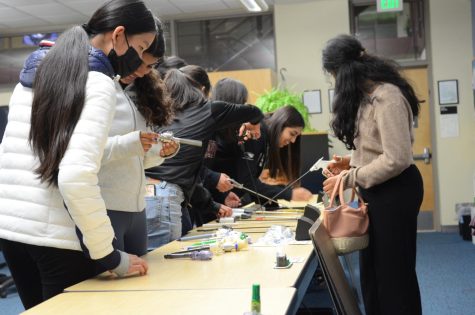
After the speaker event, attendees separated into groups to participate in three rotating workshops. The medical illustration workshop, hosted by Medical Club member Anika Mantripragada (11) in upper school physics teacher Lisa Radice’s room, focused on two of Anika’s interests: art and medicine. Students followed her instructions and learned how to draw an anatomically correct human skull.
Upper school biology teacher Dr. Matthew Harley hosted the heart dissection workshop in his own room. After explaining the parts and functions of a human heart, Dr. Harley allowed students to probe and observe freshly dissected pig hearts that he had purchased from Lion Market.
“My favorite activity was the dissection because not everyone can say that they held a pig heart in their hands,” club member Kimi Yashar (9) said. “[Dr. Harley] gave everyone pig hearts from across the street, so they were still fresh and juicy. He showed us a bunch of the main arteries and muscles in the heart and we were even able to stick a probe through the blood vessels.”
Stanford Medicine Children’s Health general surgeon Dr. Janey Pratt, who specializes in robotic hernia repair, hosted the laparoscopic surgery workshop in upper school computer science teacher Susan King’s room. Students tried their hand at laparoscopic surgery by playing with different surgical tools like staplers and testing their skills with a surgical simulation.
Evening of Medicine attendee Kaitlyn Su (10) enjoyed the various workshops provided because they allowed her to step into the shoes of a doctor.
“I think the workshops were really interesting; I got to explore some parts of medicine I didn’t know existed,” Kaitlyn said. “The heart [dissection] workshop was really hands-on since we got to actually see what a real heart looks like. But the laparoscopic surgery one was also really cool since we got to see the tools that doctors use for surgery and actually get to try it out ourselves.”
After the rotations, Dr. Pratt gave a presentation in the Nichols Auditorium about childhood obesity and its possible treatments, emphasizing the harms of the stigma surrounding obesity. Dr. Pratt shared her experience in the medical field and how her view of bariatric surgery changed from disdain to genuine appreciation when she was assigned to it.
“[Childhood obesity] is one of the most misunderstood diseases that we have and is surrounded by a tremendous amount of bias and presence,” Dr. Pratt said. “I’ve spent a lot of time educating families about it and about the use of surgery for treatment. We’re always going to have biases because we grow up in a society with biases, and you just have to keep an open mind and be willing to look at yourself.”


















![“[Building nerf blasters] became this outlet of creativity for me that hasn't been matched by anything else. The process [of] making a build complete to your desire is such a painstakingly difficult process, but I've had to learn from [the skills needed from] soldering to proper painting. There's so many different options for everything, if you think about it, it exists. The best part is [that] if it doesn't exist, you can build it yourself," Ishaan Parate said.](https://harkeraquila.com/wp-content/uploads/2022/08/DSC_8149-900x604.jpg)




![“When I came into high school, I was ready to be a follower. But DECA was a game changer for me. It helped me overcome my fear of public speaking, and it's played such a major role in who I've become today. To be able to successfully lead a chapter of 150 students, an officer team and be one of the upperclassmen I once really admired is something I'm [really] proud of,” Anvitha Tummala ('21) said.](https://harkeraquila.com/wp-content/uploads/2021/07/Screen-Shot-2021-07-25-at-9.50.05-AM-900x594.png)







![“I think getting up in the morning and having a sense of purpose [is exciting]. I think without a certain amount of drive, life is kind of obsolete and mundane, and I think having that every single day is what makes each day unique and kind of makes life exciting,” Neymika Jain (12) said.](https://harkeraquila.com/wp-content/uploads/2017/06/Screen-Shot-2017-06-03-at-4.54.16-PM.png)








![“My slogan is ‘slow feet, don’t eat, and I’m hungry.’ You need to run fast to get where you are–you aren't going to get those championships if you aren't fast,” Angel Cervantes (12) said. “I want to do well in school on my tests and in track and win championships for my team. I live by that, [and] I can do that anywhere: in the classroom or on the field.”](https://harkeraquila.com/wp-content/uploads/2018/06/DSC5146-900x601.jpg)
![“[Volleyball has] taught me how to fall correctly, and another thing it taught is that you don’t have to be the best at something to be good at it. If you just hit the ball in a smart way, then it still scores points and you’re good at it. You could be a background player and still make a much bigger impact on the team than you would think,” Anya Gert (’20) said.](https://harkeraquila.com/wp-content/uploads/2020/06/AnnaGert_JinTuan_HoHPhotoEdited-600x900.jpeg)

![“I'm not nearly there yet, but [my confidence has] definitely been getting better since I was pretty shy and timid coming into Harker my freshman year. I know that there's a lot of people that are really confident in what they do, and I really admire them. Everyone's so driven and that has really pushed me to kind of try to find my own place in high school and be more confident,” Alyssa Huang (’20) said.](https://harkeraquila.com/wp-content/uploads/2020/06/AlyssaHuang_EmilyChen_HoHPhoto-900x749.jpeg)



